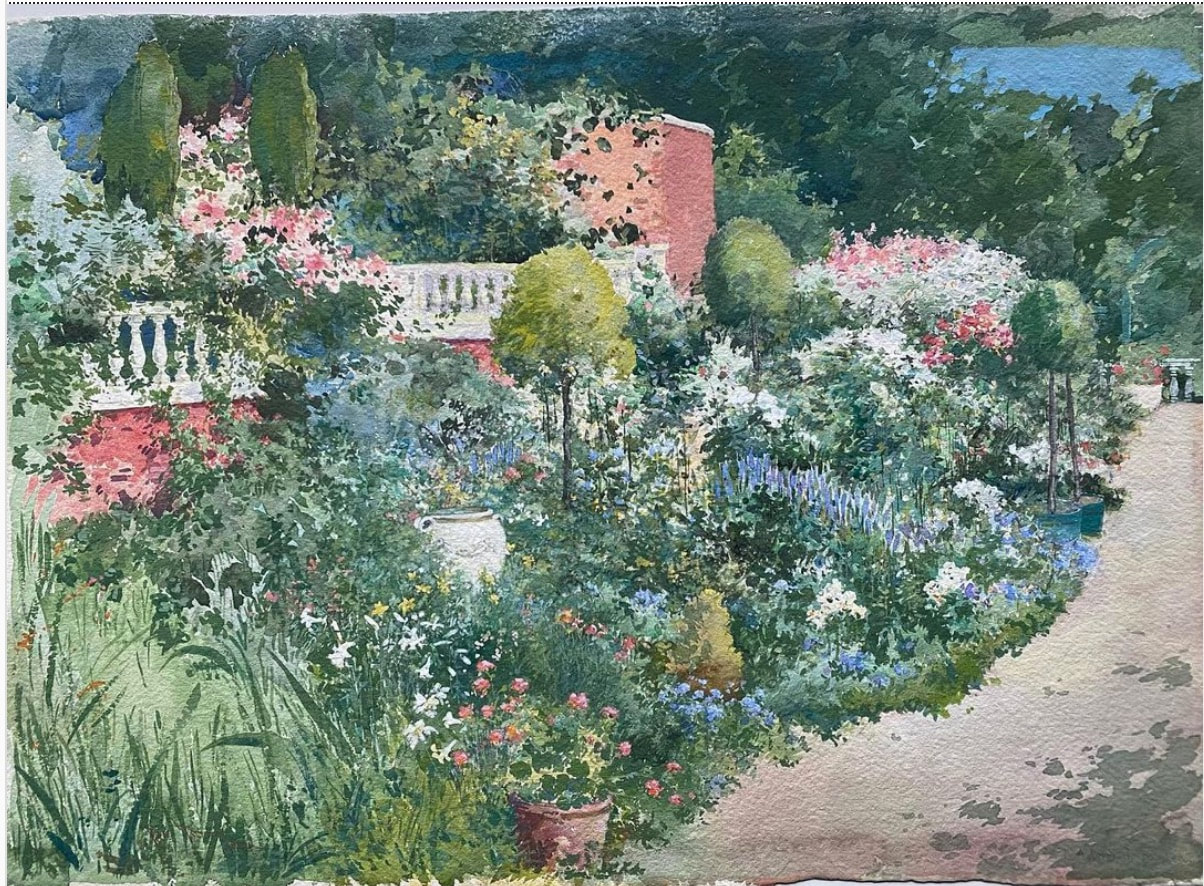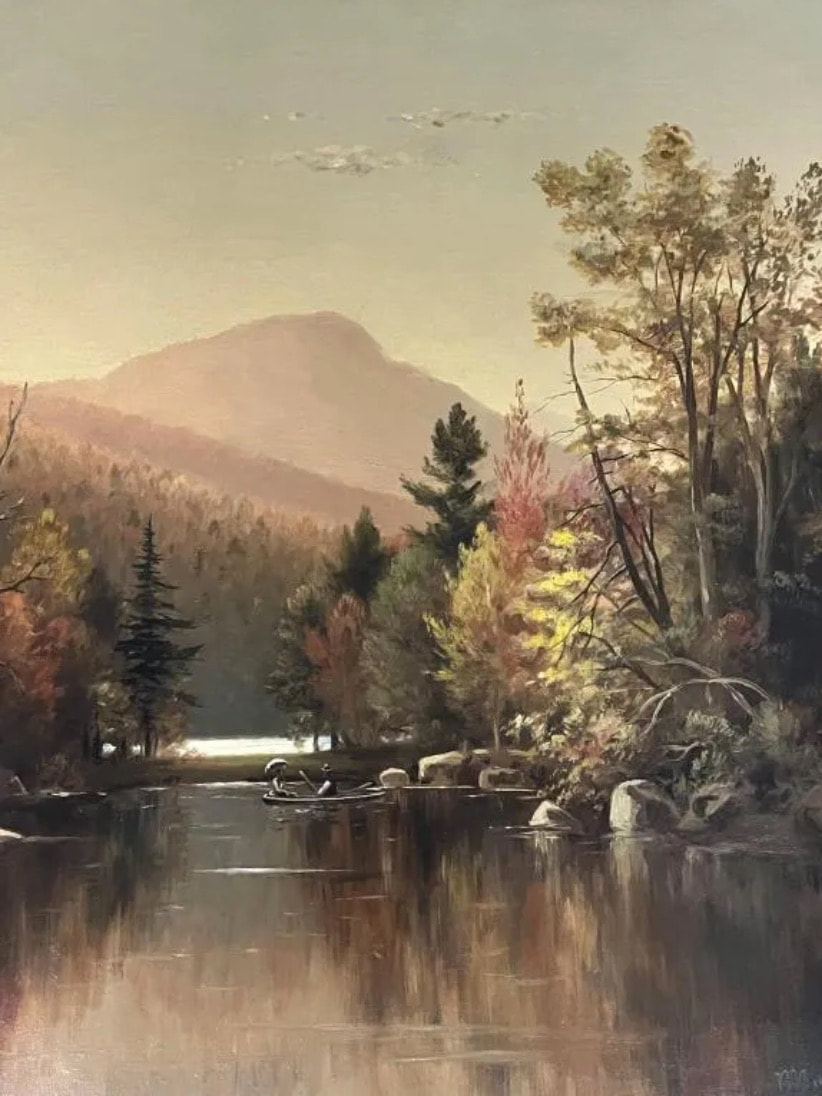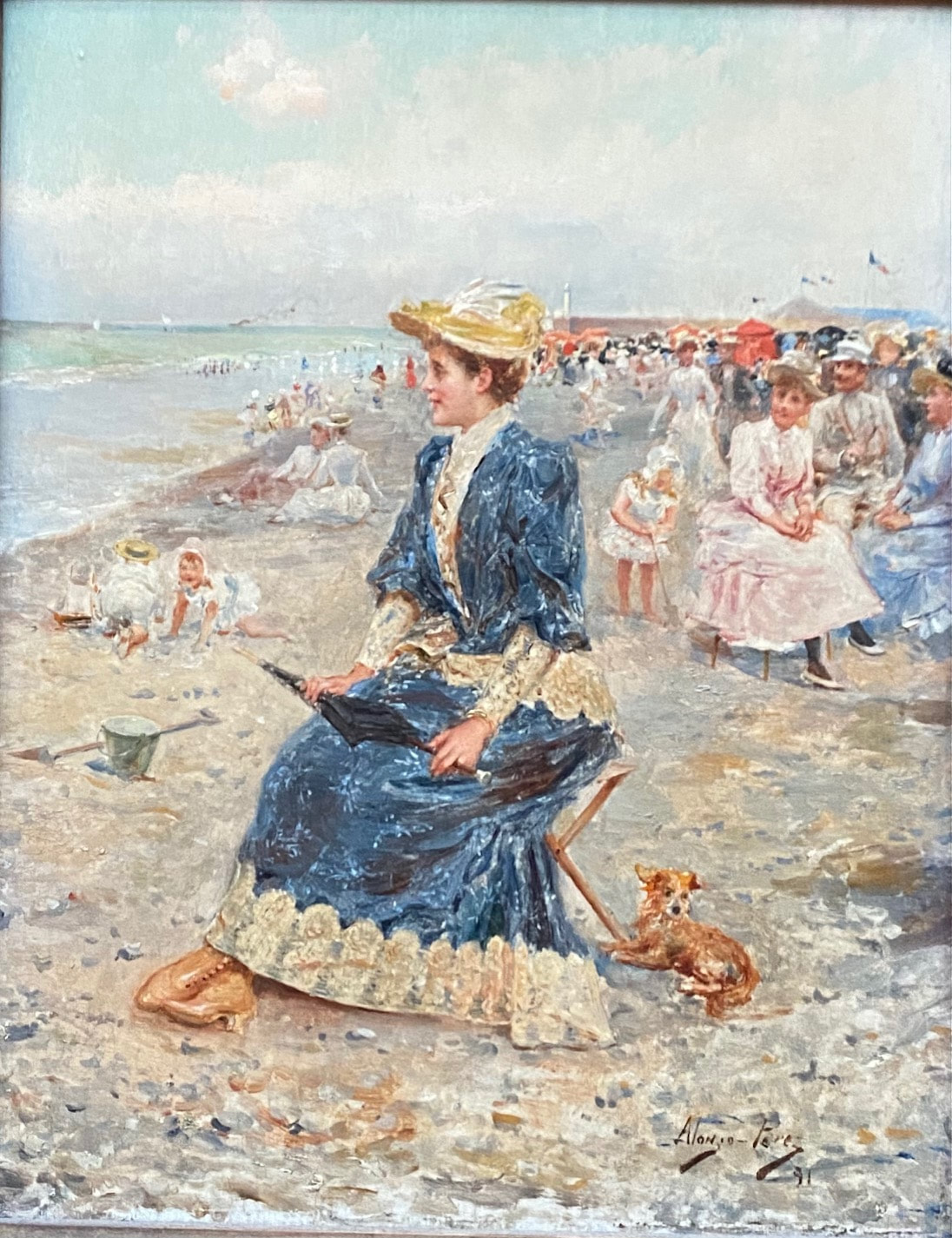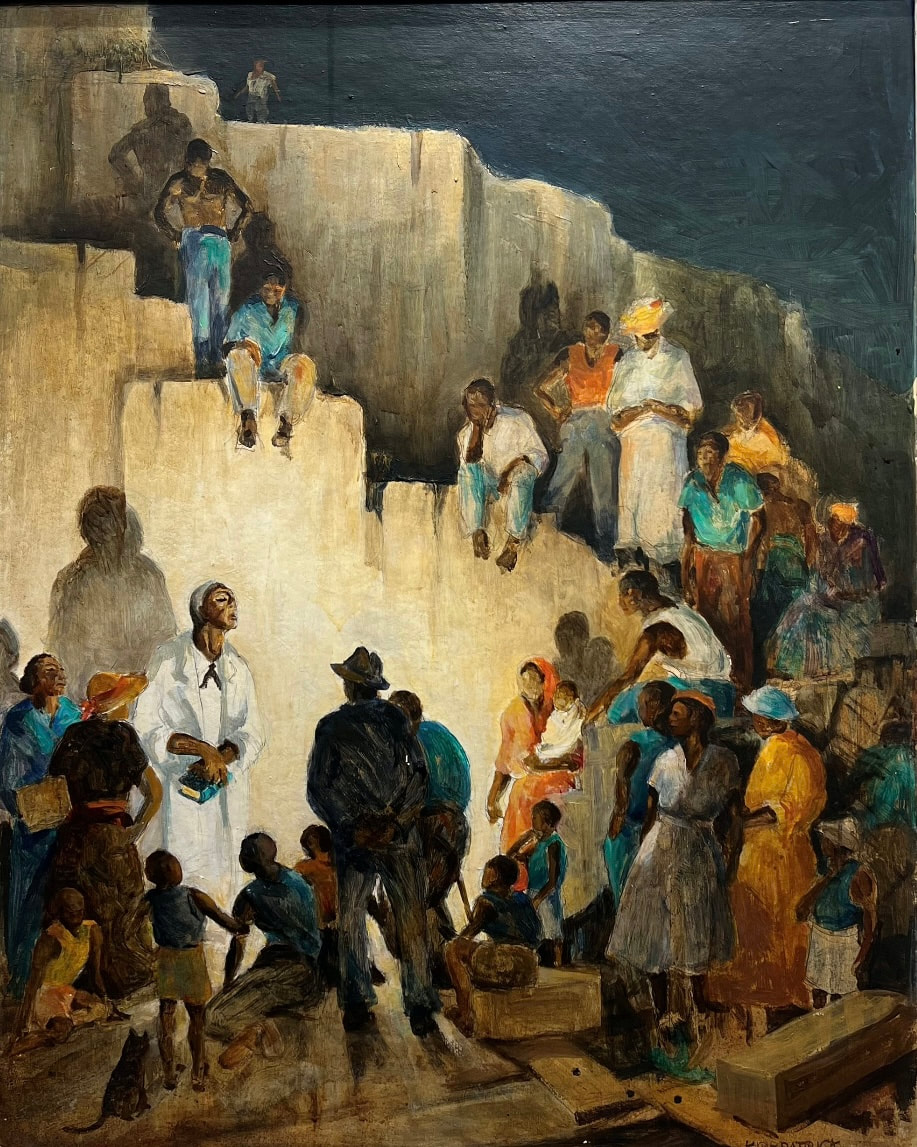
Donald Morris Kirkpatrick (American 1887-1964) - Rock of Ages, n.d. (Sermon in the Limestone Quarry, Bermuda). Oil on board, 34 x 28 inches. Signed lower right: Kirkpatrick. Titled on an original label verso. Pristine original condition, original frame. Rock of Ages is one of the artist's most ambitious and important paintings. Kirkpatrick exhibited a watercolor by the same title at the Bermuda Society of Arts in 1959, to very favorable critical acclaim. Certainly one of the finest and most complex compositions that the artist painted, set in a limestone quarry with a view to the ocean off at right. Kirkpatrick was deeply influenced by real life scenes of Bermuda's native people and his works echo the hard life and perseverance found within their community. Twenty-eight men, women and children listen to the preacher give a sermon late at night. Sorry, I've been sold!
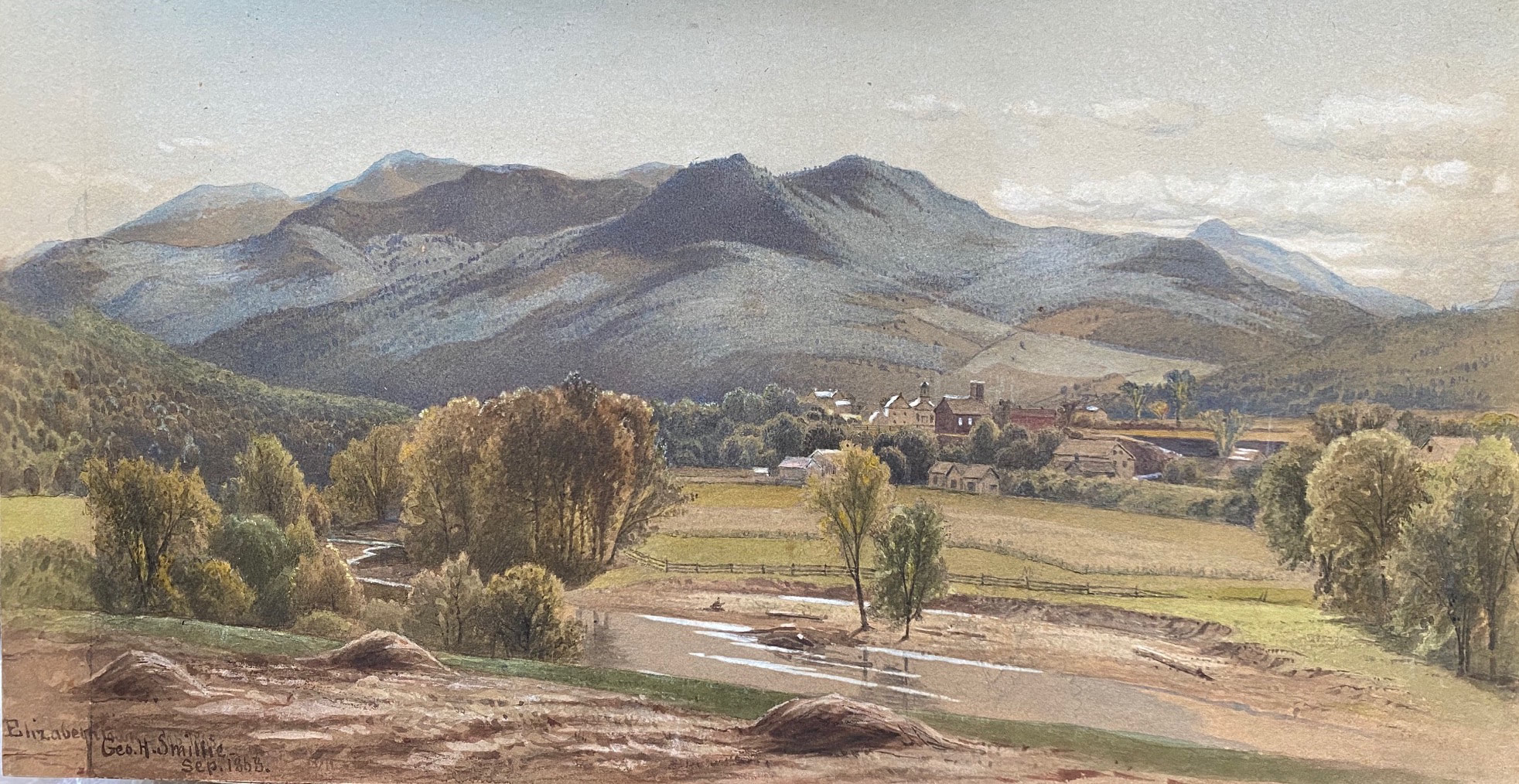
George Henry Smillie (American 1840-1921) - The Adirondack Mountains and Boquet River, Elizabethtown, New York 1868. Watercolor on paper, mtd. on board, 7.75 x 14.75 inches. Signed lower left: Geo. H. Smillie, Sep. 1868/Elizabethtown. Original condition, framed. A masterwork on paper by Smillie, from the artist's finest period.
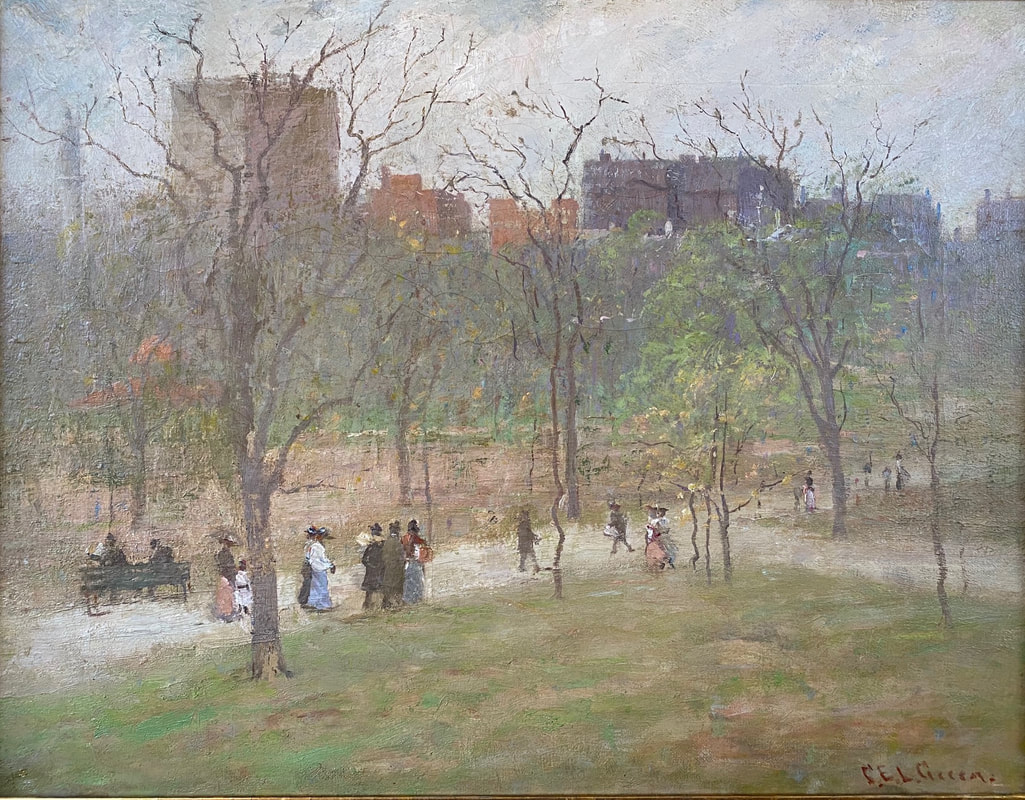
CHARLES EDWIN LEWIS GREEN (1844-1915) Boston Common, Looking Toward Beacon Street, n.d. Oil on canvas 14 x 18 inches Signed at lower right: C. E. L. Green Titled on the stretcher bar verso: Boston Common looking toward Beacon Street A native of Lynn, Massachusetts, Charles (C.E.L.) Green became an artist committed to painting American subject matter, especially the marine and landscape scenes of his native area. He often signed his paintings C.E.L. and was part of the seven “Lynn Beach Painters” that included his close friend, Charles Woodbury. He began working in the local shoe and leather industry and used the money to take art classes. He and several others had adjoining studios in Lee Hall in the City Square of Lynn. From the 1880s through 1910, he was a regular exhibitor at the Boston Art Club and also took lessons there. He was a plein-air painter, he completing his landscape and marine scenes outdoors with minimal over painting of colors. In 1885, he moved to Boston where he and Charles Woodbury had adjoining studios on Green Street and committed themselves to making their living exclusively with their painting. They succeeded, and for several years, they were linked together as being non-European trained, stay-at-home artists with very similar impressionist styles and American subject matter. They prided themselves on avoiding European influence, but in the 1890s, their styles became increasingly impressionist from seeing European works in Boston exhibitions. Green had his first one-man show in 1886 at the J Eastman Chase Gallery, one of Boston’s most prestigious exhibition venues at that time. In 1906, Green moved from Boston to his hometown of Lynn where in 1909, he became one of the founders of the Lynn Art Club. He died on January 18, 1915, having been a major influence on succeeding generations of painters inspired to paint local marine scenes of the Boston area.
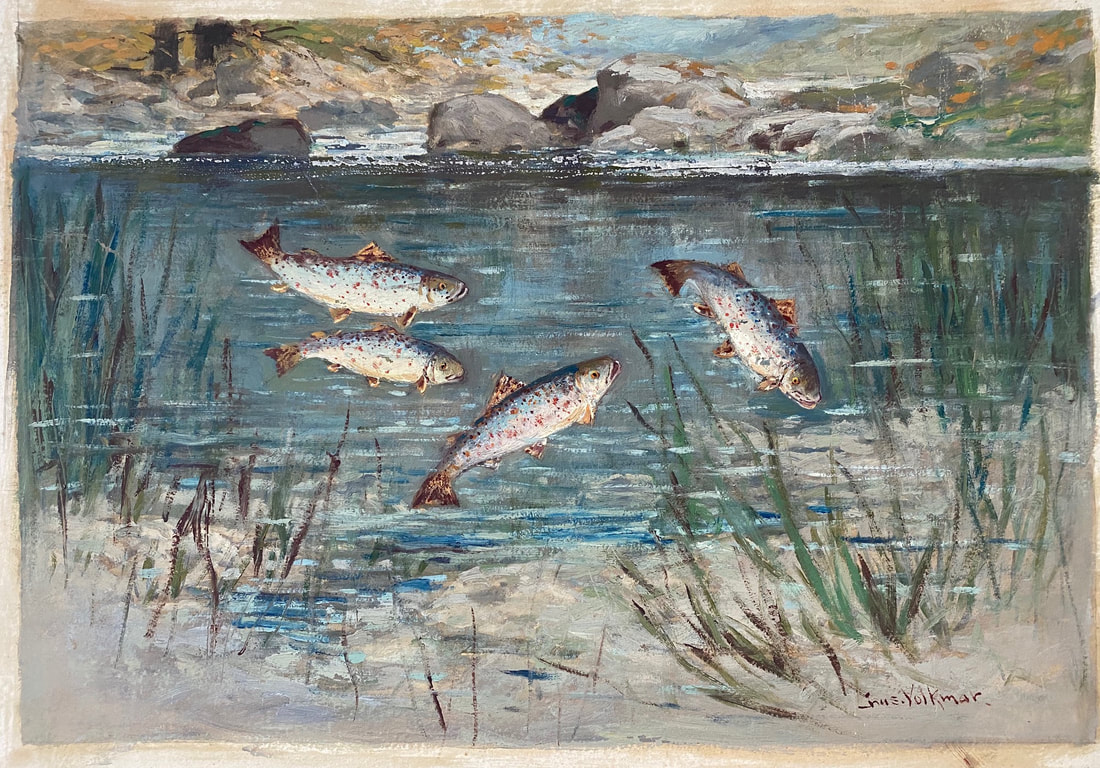
Charles Volkmar (American 1841-1914) - Rainbow Trout, (Probably Edison), New Jersey. Oil on heavy paper, 12 x 18 inches (image size). Signed lower right: Chas. Volkmar. Pristine condition.
Charles Volkmar was a painter and an etcher as well as an important craftsman whose family's involvement in the development of the ceramics industry in northeastern America played an important role in the Aesthetic movement. Charles, born in Baltimore worked most of his adult life in New Jersey. His brothers Carl and Leon, as well as his father Charles Volkmar, Sr., were all involved in artistic pursuits, and it was obviously that young Charles would follow in the same tradition. Charles would travel to Europe at the beginning of the Civil War, joining countless other young American artists in Paris, studying landscape painting under Henri Harpignies, as well as the work of Jean-Francois Millet and Charles Emile Jacque. His work included landscape painting as well as painting pottery and tiles in France, after which he returned to the United States and went into the ceramics business. Volkmar Pottery and the tiles and ceramics they produced. It is believed Charles may have also been involved in the stained-glass industry for a period as well.
Rainbow Trout, Edison, New Jersey is a masterpiece by Volkmar painted in the Aesthetic tradition. The influence of Japanese painting is clearly evident in both subject and composition. A group of four rainbow trout have come to the surface of the transparent water as the fish on the far right appears to have found an insect which has captured the attention of the other three. Volkmar had often painted ducks by a lake in Edison, but this work depicting fish is quite possibly unique.
